Ridiculous… albeit funny rap video about cycling. Some will hate it… others will love it… over 2 million views on YouTube… you decide.
Ridiculous? Funny? Terrible? What is your vote?
I Love Bicycling is a website that is geared towards cycling for beginners with road cycling tips, training articles, nutrition tips, weight loss, how to’s and bike repair articles.
by Lee Agur
by Lee Agur
Rated 18A. If you are easily offended please do not read on… This is meant to be light hearted and funny.
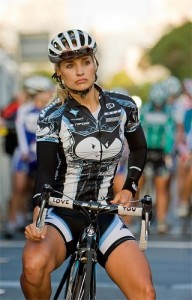

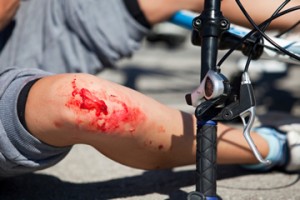
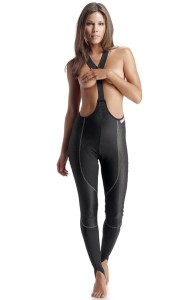


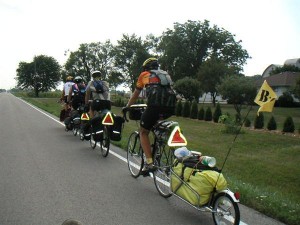
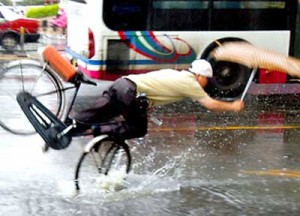
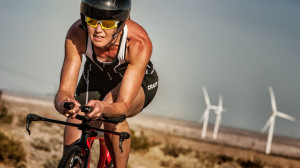
by Guest Post

What power is and why you should use it.
This training article comes courtesy of Paul Cross, a Vancouver-based fitness consultant and a partner in the FitFX Studio.
I’ve noticed a lot more athletes using power this past season than ever before. Now that the indoor season has picked up I have also noticed more athletes asking me why they should train with power. From where I sit as a full-time coach it’s pretty clear that riding with a wattage meter is becoming more popular. So what’s all the fuss about? If you’re curious about training with power but not yet familiar, please read on. If you already use power I seek to give you some information that will help you use it more efficiently.
There is merit to having an honest conversation up front. What kind of rider are you and where are your priorities and goals with regards to your cycling? Some of you may not admit to being “competitive”. While you may not enjoy “racing”, I have never met a person who did not enjoy improving his or her performance. Plain and simple…we like progress, and power aids progress. The decision to get power, however, should ultimately come down to weighing your desire to improve your cycling with the cost to do so. If we do that rationally we purchase power meters BEFORE spending money on other stuff like $10K bikes, carbon fiber wheels, a third bike, a fourth bike, or a closet full of Rapha clothing.
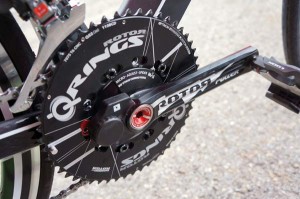 It’s pretty simple really…power is a measure of work over time. It’s measured in watts. While it might seem as easy as visualizing the amount of pressure or torque you’re putting into the pedals, it’s in fact a little more than that. The same amount of pressure at 80 revolutions per minute (rpm) and 100 rpm will give you lower and higher wattages relatively. This is because you are doing less or more work per minute. If you’re cruising along on a pancake flat road at 90 rpm in an easy gear, and then you switch into a harder gear and while maintaining an identical cadence, you will also be applying more power. In this case the amount of pressure on the pedals has increased. One thing is certain, more power means more speed.
It’s pretty simple really…power is a measure of work over time. It’s measured in watts. While it might seem as easy as visualizing the amount of pressure or torque you’re putting into the pedals, it’s in fact a little more than that. The same amount of pressure at 80 revolutions per minute (rpm) and 100 rpm will give you lower and higher wattages relatively. This is because you are doing less or more work per minute. If you’re cruising along on a pancake flat road at 90 rpm in an easy gear, and then you switch into a harder gear and while maintaining an identical cadence, you will also be applying more power. In this case the amount of pressure on the pedals has increased. One thing is certain, more power means more speed.
I first started training with power on a CompuTrainer (a computerized indoor trainer) back in the early 90s. I got immediate results. I was working smarter, riding steadier and the rate of my progress increased. Using a power meter can make you a better rider. Quick example: An athlete I’ve been coaching for a couple of years rode with me the first year with no power. Then I suggested he try it. He did and within only a few workouts he was singing the praises of power. Now even though he doesn’t ride with power all the time he says it transformed his training and racing, permanently making him a better cyclist. This kind of positive feedback is typical in my experience.
If you know how to use the numbers power can be the most beneficial training tool you have. Your riding buddies may be kind, but the power meter will not embellish. As I am fond of saying, “the numbers don’t lie”. If you started too hard the power file will show that. Of course, you need to download it and look at it. Do you have a lot left in the tank at the end of your event? The power file will show that too. If you’re not riding steady the power will clearly reflect that. Conversely if you ride like a super-hero the power will give you the proof that you have done so.
Cycling is an endurance sport. For any activity where endurance is concerned, efficiency is paramount. Efficiency means being more steady. If you are applying steady power, you are efficient. If your power is changing quickly from 100 watts to 400 watts to 200 watts – up down and all over the place – you’re not going to be very efficient. This is actually how a lot of people ride a bike, often without realizing it. Their ego gets the better of them and they need to pass that rider in front only to have to slow down later. Perceived effort is not a bad way of controlling yourself to ride steady. Heart Rate is a better way of controlling your pacing. But ultimately power is the best way.
Another athlete I coached this past season was new to training with power in the spring. He had thought of himself as a “weak climber”. What we discovered quite quickly by taking a look at his power files is that he was starting the climbs way too hard. At the beginning of the climbs his power was spiking up to about 130, 140 and even 150% of his lactate threshold. This is a sure way to set yourself up to climb poorly. Once he started to approach the climbs much more conservatively at a wattage closer to his threshold, he started climbing better. He was more able to keep up (even beat) some of the guys in his riding club. Some of these guys had previously been ahead of him on the climbs.
Let’s keep in mind that riding well is not all about the physical stuff (i.e. strength, skill, stamina and speed). Riding well is also about confidence. More confidence means better execution on the road. In a study of returning Olympians, the number one thing that athletes said they would have, could have or should have worked on more before the Games was mental skills. Bring your A-mental game and chances of both success and enjoyment increase. Confidence breeds excellence. Uncertainty breeds mediocrity and possibly failure. And power provides the information to build confidence on race day.
Athletes will sometimes cite heart rate as an excuse to not get power. In the absence of anything else, heart rate is awesome. It’s just not as good as using power and heart rate together. Where does heart rate play into the mix? Well, heart rate is telling you how you are responding to the work. If you are in better shape, then you will respond to the work by not being as tired, relatively. Let’s say you start riding in the off-season out of shape – for example, at 150 watts for five minutes your heart rate is 165 beats per minute. After months of training you may be able to ride at 195 watts for five minutes at the same 165 beats per minute. Ultimately, it’s rather hard to know this unless you’re using a power meter.
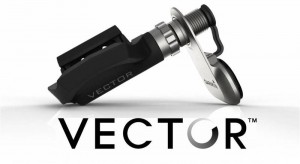 Accurate power tools for cyclists are more available now than ever before. Of course, you can also purchase power tools that are not as accurate. There are plenty of options out there. Which power tool should you get? That’s a question that demands it’s own dedicated article. Should you get hub-based, bottom bracket-based, pedal-based, or crank-based power? It all depends on several factors. The purpose of this article is not to debate the merits of different power tools available on the market. I do hope I have shed some more light on why people are choosing to use power meters and how you can benefit from getting on that bandwagon. I will say this, however, in regards to power meters: the “get what you pay for” axiom applies. Pay for a decent power meter or don’t bother. Like grandma used to say: “do something right or don’t do it at all”. Some of the decent power meters available include: SRM, Power-Tap, Garmin Vector Pedals, Quarq, and Stages.
Accurate power tools for cyclists are more available now than ever before. Of course, you can also purchase power tools that are not as accurate. There are plenty of options out there. Which power tool should you get? That’s a question that demands it’s own dedicated article. Should you get hub-based, bottom bracket-based, pedal-based, or crank-based power? It all depends on several factors. The purpose of this article is not to debate the merits of different power tools available on the market. I do hope I have shed some more light on why people are choosing to use power meters and how you can benefit from getting on that bandwagon. I will say this, however, in regards to power meters: the “get what you pay for” axiom applies. Pay for a decent power meter or don’t bother. Like grandma used to say: “do something right or don’t do it at all”. Some of the decent power meters available include: SRM, Power-Tap, Garmin Vector Pedals, Quarq, and Stages.
So…are you ready to start playing with power?
Paul Cross is an exercise consultant, owner of Cross Athletic Consulting, and partner at Vancouver’s Fit FX Studio. Paul can be reached at: paul@fitfxstudion.com
This article was provided by Grandfondo Axel Merckx Okanagan. Sign up and come race in one of the most beautiful areas to cycle in the World!
Here is a great book on Training and Racing With a Power Meter written by Hunter Allen that will transform the way you train.
by Guest Post
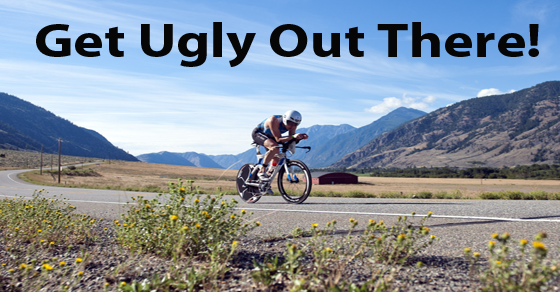 Jeff Symonds (2013 Challenge Penticton Champion)
Jeff Symonds (2013 Challenge Penticton Champion)
What would you do if you knew you would not fail? Or for the triathletes in the crowd, what would you do if you knew you didn’t have to run afterwards? The Granfondo Axel Merckx Okanagan (GFAMO) is a great way for triathletes to find the answer to this question. Granfondo events are a great opportunity to get out of your comfort zone and tear down any fears you might have. Whether your fears are related to how hard you can push, or whether or not you can cover the distance, the ‘Fondo will have an answer for you.
Pacing is undeniably critical to triathlon success. We train and develop the ability to sustain that pace for incredible amounts of time. But sometimes it’s tough to mentally and physically breakaway from that pace. The excitement of a 2000+ person Granfondo start-line will provide you with an almost euphoric surge of motivation to push new boundaries. Adding to that motivation is that in an event of this size, there isn’t just one rider to chase, but an entire group. There is an almost endless supply of competitors to push you and encourage you to find a new level of performance.
When I took part in the GFAMO in 2012, I found myself pushing extremely high wattages early on. If I had seen these wattages in a triathlon I would have slowed down and conserved myself for the run. But the beauty of the ‘Fondo is that there is no run. If you go too hard you don’t have to suffer through a 42.2 km death march, you can simply soft-pedal back to town. Because of this I threw caution to the wind and “got ugly out there”! I rode the like a maniac and attacked off the front. After riding hard all day I got to the finish-line expecting to be fully cooked. On the contrary, I felt pretty good. In the process, I found a new level of hurt. Three weeks later I took this knowledge and confidence into the Ironman 70.3 Calgary. I used the new limits that I had found in the ‘Fondo, to finish on the podium on the back of a strong bike and a solid run.
Participating in supported group riding like the ‘Fondo is a great way to practice many elements of long course racing, without having to worry about the long recovery that comes with running. Pre-event jitters, pace, nutrition, hydration, equipment and mental strategies are all crucial elements to triathlon success that can be practiced in the ‘Fondo.
Until next time…Ride Hard and Smile Often. And don‘t forget to Get Ugly Out There!
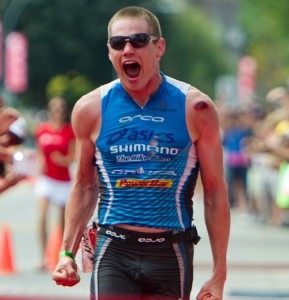 Jeff Symonds
Jeff Symonds
Jeff Symonds is a Canadian professional triathlete from Penticton B.C. In 2011, Jeff broke through with a 3rd-place finish at the Ironman 70.3 World Championships. Last August, he captured the inaugural Challenge Penticton title, averaging more than 38 km/h on the 180 km bike segment. Jeff now lives and trains in Vancouver, B.C.
Article Courtesy of Granfondo Axel Merckx Okanagan
Side Note: Lee Agur (Founder of this site) will be participating in the 2014 Granfondo Axel Merckx Okanagan and will buy you a beer if you finish before him. So sign up for the 2014 Granfondo Axel Merckx Okanagan here and earn a free drink and some bragging rights. Get a hold of him through the contact page so he can keep an eye out for you.
by Guest Post

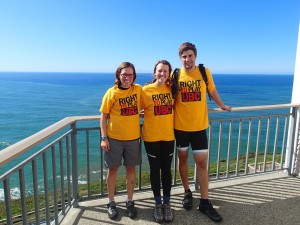 Several months ago, I worked up the courage to mention to my parents that I was going to bike from Canada down the U.S. west coast, Baja, Mexico and into Central America to raise funding and awareness for Right To Play. They both laughed in my face, not taking me seriously and said I couldn’t do it. They weren’t laughing because I couldn’t physically do it, but because they were freaked out about me getting hit by a truck, not speaking a word of Spanish, and stuff like that… fair enough! Secretly, I had been planning this trip for years and I was already 100% committed. Soon enough my sister, Ella, was on board! Now they were worried about BOTH of their daughters getting killed in Mexico…
Several months ago, I worked up the courage to mention to my parents that I was going to bike from Canada down the U.S. west coast, Baja, Mexico and into Central America to raise funding and awareness for Right To Play. They both laughed in my face, not taking me seriously and said I couldn’t do it. They weren’t laughing because I couldn’t physically do it, but because they were freaked out about me getting hit by a truck, not speaking a word of Spanish, and stuff like that… fair enough! Secretly, I had been planning this trip for years and I was already 100% committed. Soon enough my sister, Ella, was on board! Now they were worried about BOTH of their daughters getting killed in Mexico…
Being the older sister, I said “Ella, if you are going to come on this trip then you HAVE to seriously train because if you’re slow I am not going to wait for you.” She and I both knew I meant it. Don’t get me wrong, Ella was physically fit before we started this bike tour but we were not on the same playing level. I am more or less obsessed with exercising, can’t go a day without it and have been training for years for a trip like this. Ella… let me just say that she would rather stay out until 4 AM drinking on the weekends rather than use that time for rest and recovery or a bonus ride. To top it off, she bought her bike two weeks before our departure date of Sept. 22nd 2013… I did force her to come for a 100 km ride with me before we left to make sure she could actually do it (without the load on the bike). She did it (in good time), but I was basically planning on her ditching me two weeks into the trip and cycling the rest solo.
Today is Nov. 17th, 2013 and we are in La Paz, Mexico. My sister is still with me, along with another young man by the name of Gerry Hol (who asked if he could join and literally bought his bike one week before the trip). Neither of them trained much and I don’t think Gerry had biked more than 50 km in his life before this trip. My point is, you don’t need to be some crazy endurance athlete to bicycle tour. How can you even train for something like this unless you quit your job and bike 8 hours a day with a 75 lb load on your bike? It’s just not realistic. But it is realistic for anyone to do. The hardest part is stepping outside your comfort zone and coming to terms that you aren’t going to be sleeping in your king size bed, the weather will not be perfect and you will get thirsty and hungry. If you’re okay with that then you are ready!
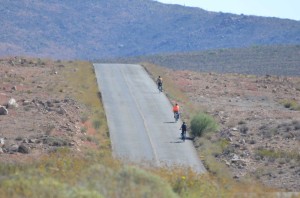 As for our adventure, we are 160 km from Cabo San Lucas where we are going to call it quits for now. The rest of Mexico, Central and hopefully South America will have to wait until I can speak Spanish and have a bit more money saved. The trip up until now has been unforgettable for all of us. The only bike repair I knew how to do before I left home was how to change a tire and put a patch on… amazingly I haven’t had a single flat this whole trip! How is that even possible?! However I did get two broken spokes in the most rural part of Baja (of course I didn’t have any extras or know how to change them) so I had to improvise with some emergency wiring until I found a very rustic bike shop in Guerrero Negro. Other than that my back tire is almost completely worn through to the tube and my chain looks like it will fall apart at any moment. Hopefully my bike can pull through for another 160 km!
As for our adventure, we are 160 km from Cabo San Lucas where we are going to call it quits for now. The rest of Mexico, Central and hopefully South America will have to wait until I can speak Spanish and have a bit more money saved. The trip up until now has been unforgettable for all of us. The only bike repair I knew how to do before I left home was how to change a tire and put a patch on… amazingly I haven’t had a single flat this whole trip! How is that even possible?! However I did get two broken spokes in the most rural part of Baja (of course I didn’t have any extras or know how to change them) so I had to improvise with some emergency wiring until I found a very rustic bike shop in Guerrero Negro. Other than that my back tire is almost completely worn through to the tube and my chain looks like it will fall apart at any moment. Hopefully my bike can pull through for another 160 km!
Get more detail of their Epic Journey here and if you wish to donate to their cause do that here. More details on their adventure soon.
by Lee Agur
Amazingly Taylor Phinney holds off the hounds in stage 4 of The Tour Of Poland. One of my favorite finishes of 2013… he takes off with 8km to go… and the peloton could not get it together to catch him. He showed some real grit and determination.
What a hero!!!

If you watch the video from where he takes off at 8km you appreciate the finish that much more.
by Lee Agur
This video is a trailer of “The Armstrong Lie” movie. Alex Gibney, the film maker, documents Armstrong’s rise to glory and subsequently, his fall from grace. The Armstrong Lie movie covers interviews with former friends, former teammates and journalists.
There are insightful interviews with George Hincapie, Frankie and Betsy Andreu; however, some key players are only briefly mentioned such as Floyd Landis and Tyler Hamilton.
The Armstrong lie covers the dark side of Lance Armstrong and how prominent drugs were in the peloton.

Hmm…
by Lee Agur
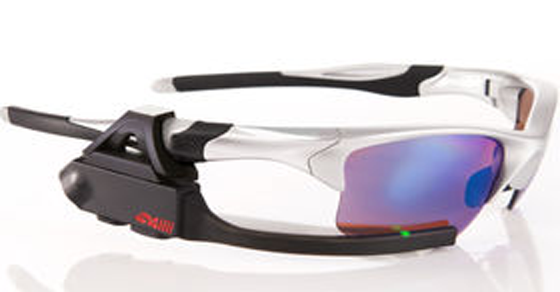 Are you a Strava user? This new invention may really intrigue you.
Are you a Strava user? This new invention may really intrigue you.
Cliiiimb is a gadget that gives real time Strava segment feedback. You are able to set the desired segments before your ride and the gadget will let you know:
Cliiiimb comes in audio or audio and visual and clips on to your sunglasses and works using a free app downloadable to your phone.
The new invention will make you dig deeper for your intense training rides because it can show you where you are in relation to the KOM or your personal best in real time.
This is a very cool new invention that is the first in its class. No other device allows you to know real time statistics.
Cliiiimb is being sold for $129 (the audio version) and Cliiiimb Pro is going for $199 (the audio and visual version). The Cliiiimb Pro is available for purchase online right now from 4iiii. The audio only version will be available next year.
by Nicole Kurz
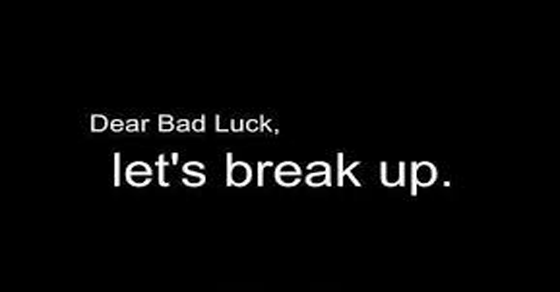 You know how they say bad luck comes in threes? It’s possible that I’m the poster child for this superstition.
You know how they say bad luck comes in threes? It’s possible that I’m the poster child for this superstition.
And all those people who say, “there’s no such thing as a bad workout” can shut it after my bike ride today.
So here’s the good part. I didn’t die. I only almost did.
There was nothing unusual about the ride today at the start. I was riding during lunch with my normal group from work. Same peeps I always ride with. One of two routes we always do.
Five minutes out I flat. It’s my front tire, so at least it’s an easy change. We have a slight mishap that results in change one exploding in all of our faces, but we get it right the second time and we’re rolling.
Other than the headwind on the way out, it’s a great ride. Hot, flat and fast, and before we know it we’re at the turn around ready to head back.
With the wind at our back we’re flying. I’m riding with two stronger cyclists so they give me some double draft love. At one point I look down and we’re going 22 mph and it feels easy. I actually felt the need to double check that someone didn’t replace my chamois with a rocket.
Nope, no rocket. Wind, legs and a great draft.
Then out of nowhere, a rogue missile launches itself down my shirt and I’m greeted with blinding pain on my right… Boob. What the… oh, not a missile. A bee!
Having never been stung before my reaction was two fold. One, holy mother of God this hurts like HELL. Two, I really really hope I’m not allergic.
After swearing like a sailor I let my cyclist friends know what had happened. Blondie dropped back behind me to make sure I didn’t suddenly pass out and fall off my bike.
Or at least, that’s what we said jokingly, having no idea of what was to come.
At this point, I just wanted to be back. This bugger hurt. We prepare to make the left turn across 4 lanes of traffic back into our office park. I’ve done this probably 50 times without incident. This time there is traffic, but we’re prepared. We cross two lanes and I prepare to stop in the median.
Now, I’ve posted before on my blog as a newer cyclist about my stopping difficulties with these fancy pedals. But my cycling has been much stronger of late. As long as I really concentrate and focus on what I’m doing, I have no issues. I’m telling ya, Tour de France is just a bunny hop away.
Ok so not quite.
And when 100% of my focus is on “holy crap dear god why did I have to get stung in the BOOB” it’s pretty clear that my focus is not on stopping.
I unclip left and promptly lean right and find myself toppling over INTO ONCOMING TRAFFIC!
Thank goodness the woman in the white sedan was paying attention and managed to stop about a foot from my head. When I hopped up laughing to move out of the lane and wave her on, I realized by the panicked look on her face and how she was clutching her chest that maybe that had been a nearer death experience than I realized.
Luckily, I’m in one piece.
I’m still a calamity, and will live to terrorize bees and motorists another day.
This hilarious story was written by Nicole Kurz over at Not the Fat Kid in Gym Class Anymore. For more of her harrowing tales of fitness, cycling and near death experiences visit her blog.
by Lee Agur
A hilarious video of what triathletes say on a daily basis. Have you been caught saying these phrases? Do you have friends that say these phrases?
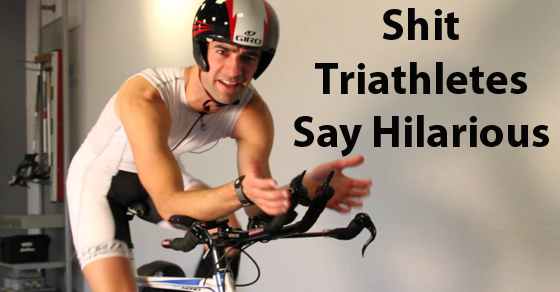
If you like it, share it!